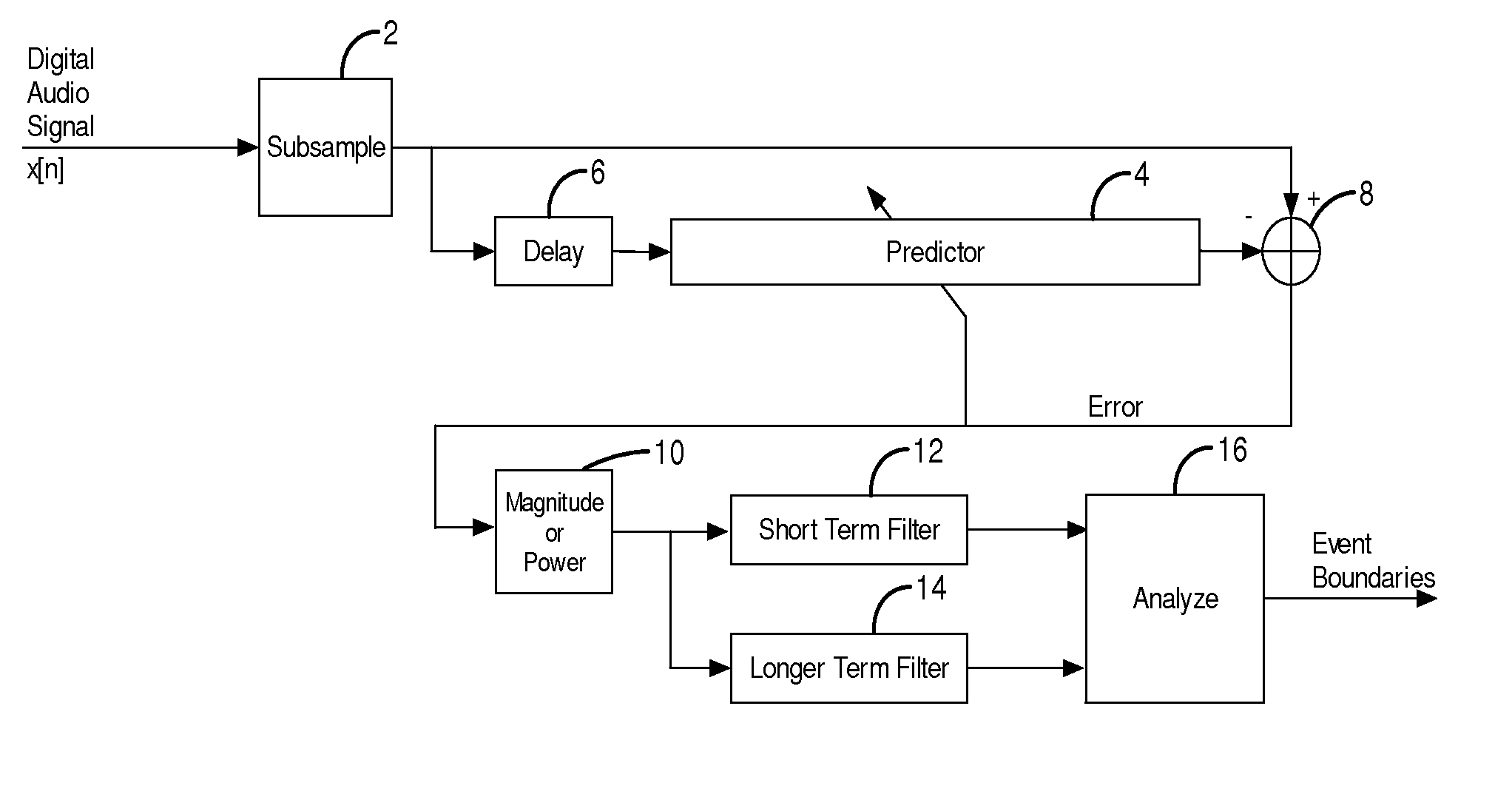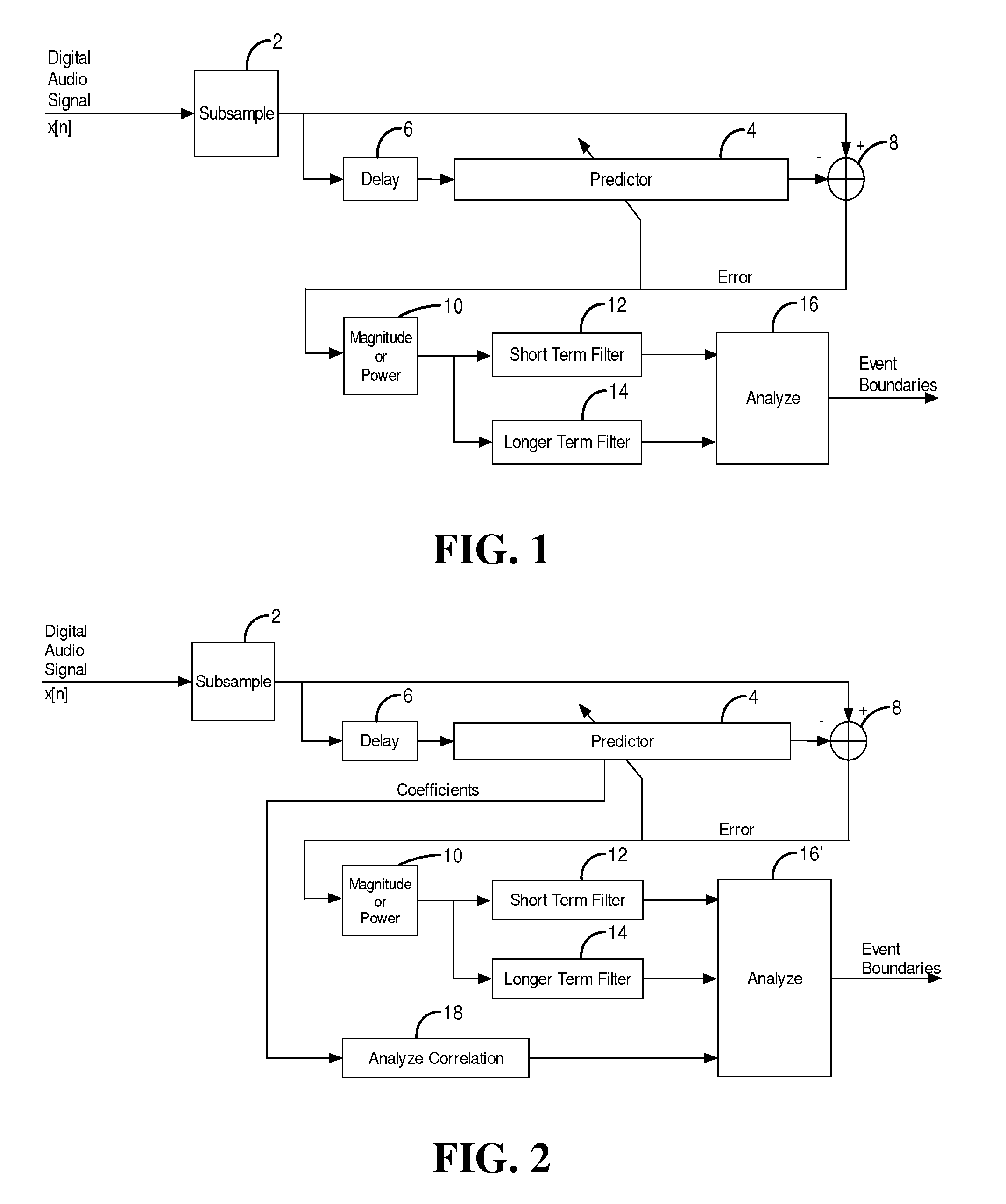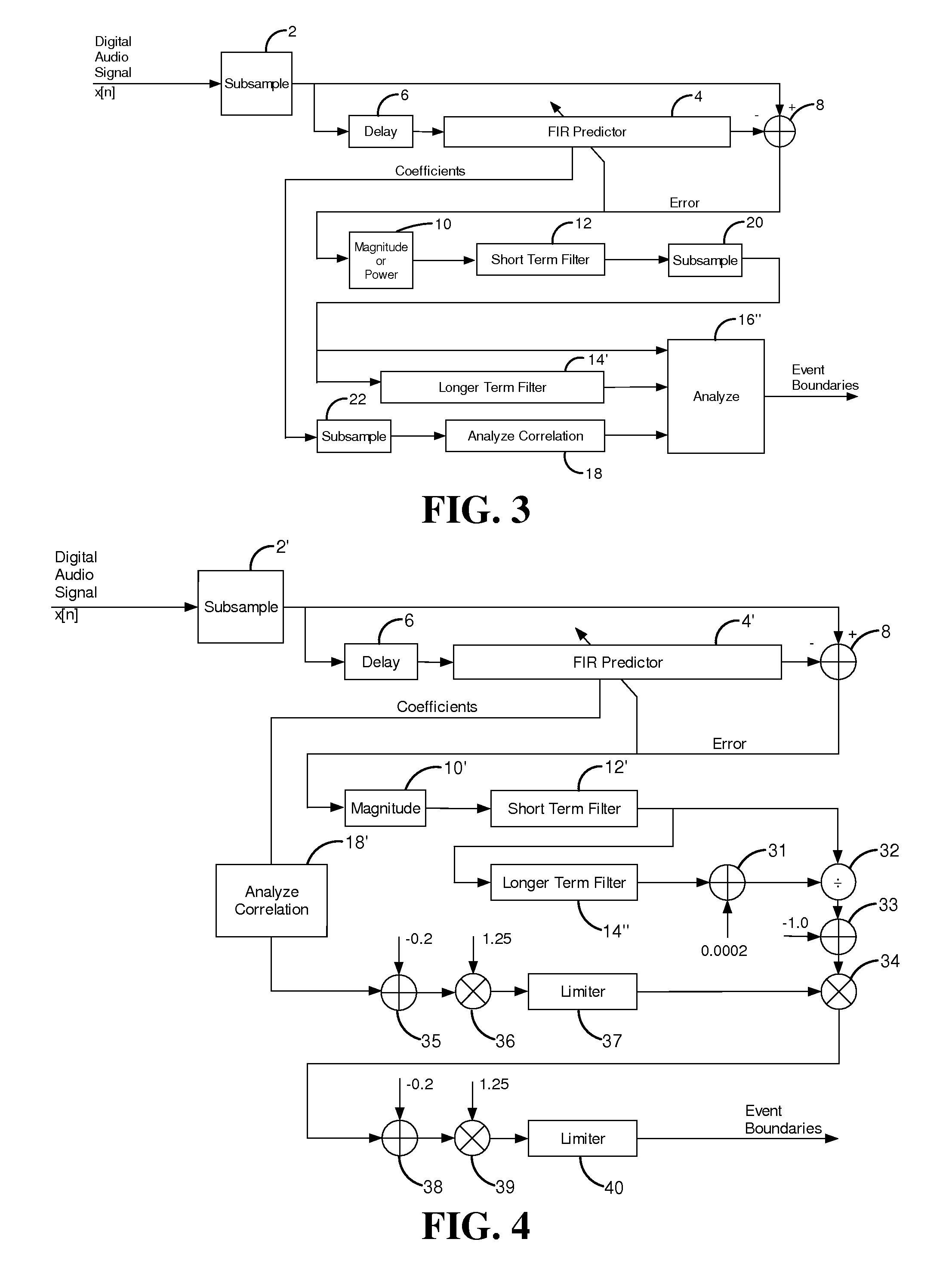[0014]An aspect of the present invention is the realization that the detection of changes in the spectrum of a
digital audio signal can be accomplished with less complexity (e.g., low memory requirements and low
processing overhead, the latter often characterized by “MIPS,” millions of
instructions per second) by subsampling the digital audio signal so as to cause aliasing and then operating on the subsampled signal. When subsampled, all of the spectral components of the digital audio signal are preserved, although out of order, in a reduced bandwidth (they are “folded” into the
baseband). Changes in the spectrum of a digital audio signal can be detected, over time, by detecting changes in the frequency content of the un-aliased and aliased signal components that result from subsampling.
[0016]Contrary to normal practice, aliasing according to aspects of the present invention need not be associated with an anti-aliasing filter—indeed, it is desired that aliased signal components are not suppressed but that they appear along with non-aliased (
baseband) signal components below the subsampled
Nyquist frequency, an undesirable result in most audio processing. The mixture of aliased and non-aliased (baseband) signal components has been found to be suitable for detecting auditory event boundaries in the digital audio signal, permitting the
boundary detection to operate over a reduced bandwidth on a reduced number of signal samples than would exist without the aliasing.
[0023]Detecting auditory event boundaries in accordance with aspects of the invention may minimize the
false detection of spurious event boundaries for “bursty” or
noise-like signal conditions such as hiss, crackle, and
background noise[0026]In accordance with an aspect of the present invention, a change in
pitch may be detected by using an
adaptive filter to track a linear predictive model (LPC) of each successive audio sample. The filter, with variable coefficients, predicts what future samples will be, compares the filtered result with the actual signal, and modifies the filter to minimize the error. When the
frequency spectrum of the subsampled digital audio signal is static, the filter will converge and the level of the
error signal will decrease. When the spectrum changes, the filter will adapt and during that
adaptation the level of the error will be much greater. One can therefore detect when changes occur by the level of the error or the extent to which the filter coefficients have to change. If the spectrum is changed faster than the adaptive filter can adapt, this registers as an increase in the level of the error of the predictive filter. The adaptive predictor filter needs to be long enough to achieve the desired
frequency selectivity, and be tuned to have an appropriate convergence rate to discriminate successive events in time. An
algorithm such as normalized least mean squares or other suitable adaption
algorithm is used to update the filter coefficients to attempt to predict the next sample. Although it is not critical and other
adaptation rates may be used, a filter
adaptation rate set to converge in 20 to 50 ms has been found to be useful. An adaptation rate allowing convergence of the filter in 50 ms allows events to be detected at a rate of around 20 Hz. This is arguably the
maximum rate that of event
perception in humans.
[0029]An aspect of the present invention is that auditory event boundaries may be detected by relative changes in spectral balance rather than the absolute spectral balance. Consequently, one may apply the aliasing technique described above in which the original digital audio signal spectrum is divided into smaller sections and folded over each other to create a smaller bandwidth for analysis. Thus, only a fraction of the original audio samples needs to be processed. This approach has the
advantage of reducing the effective bandwidth, thereby reducing the required filter length. Because only a fraction of the original samples need to be processed, the computational complexity is reduced. In the practical embodiment mentioned above, a subsampling of 1 / 16 is used, creating a computational reduction of 1 / 256. By subsampling a 48 kHz signal down to 3000 Hz, useful spectral selectivity may be achieved with a 20 tap predictive filter, for example. In the absence of such subsampling, a predictive filter having in the order of 320 taps would have been required. Thus, a substantial reduction in memory and processing overhead may be achieved.
 Login to View More
Login to View More  Login to View More
Login to View More 


